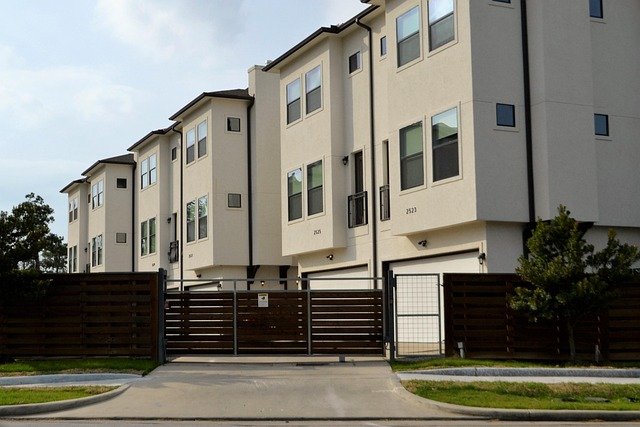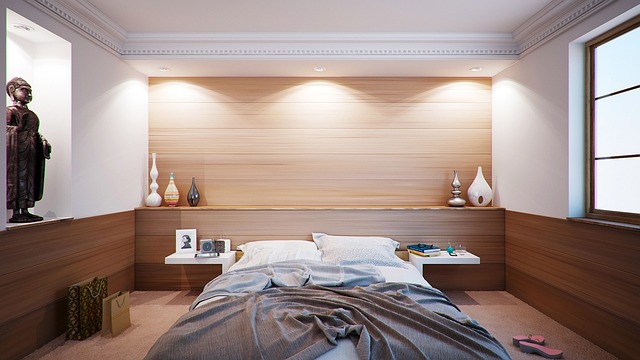Micro-Unit Living: The Next Big Thing in Urban Real Estate
The concept of micro-unit living is gaining traction in major cities worldwide, reshaping urban real estate markets and challenging traditional notions of home size. As housing affordability continues to be a pressing issue in metropolitan areas, developers and city planners are turning to these compact living spaces as a potential solution. This article delves into the rise of micro-units, their impact on real estate markets, and what this trend means for investors, renters, and urban development.

The Driving Forces Behind Micro-Unit Popularity
Several factors have contributed to the growing popularity of micro-units in urban real estate markets. Firstly, the increasing population density in major cities has led to a shortage of affordable housing options. Micro-units offer a solution by allowing developers to create more units within a given space, potentially increasing housing supply without requiring extensive new construction.
Secondly, changing demographics and lifestyle preferences play a significant role. Millennials and young professionals often prioritize location over space, valuing proximity to work, entertainment, and urban amenities. For this demographic, micro-units provide an affordable entry point into desirable neighborhoods that might otherwise be out of reach.
Lastly, the rise of the sharing economy and minimalist lifestyles has shifted perceptions of living space. Many urban dwellers are embracing the idea of living with less, focusing on experiences rather than possessions. Micro-units align with this philosophy, offering a simplified living arrangement that encourages residents to engage more with their surrounding community.
Design Innovations in Micro-Unit Development
The success of micro-units heavily relies on innovative design strategies that maximize space efficiency and livability. Architects and designers are employing various techniques to create functional and appealing living environments within limited square footage.
One common approach is the use of multifunctional furniture and built-in elements. For example, Murphy beds that fold into the wall, dining tables that convert into work desks, and storage-integrated staircases are becoming standard features in micro-unit designs. These solutions allow residents to reconfigure their living space throughout the day to suit different activities.
Another key design element is the emphasis on vertical space utilization. High ceilings, loft beds, and floor-to-ceiling storage help create a sense of openness and provide additional functional area without increasing the footprint. Some developers are also incorporating shared amenities within their buildings, such as communal lounges, workspaces, and rooftop gardens, to complement the compact private living spaces.
The Financial Implications for Investors and Developers
From an investment perspective, micro-units present an intriguing opportunity in the real estate market. While the cost per square foot may be higher for these units, the potential for increased rental income per building can be substantial. In markets with high demand for affordable housing, micro-units can command premium rents relative to their size, often outperforming larger units in terms of price per square foot.
Developers are finding that micro-unit projects can be more cost-effective to build and operate. The smaller unit sizes allow for more efficient use of land and resources, potentially leading to higher returns on investment. Additionally, the appeal of micro-units to young professionals and students often results in lower vacancy rates and faster lease-up periods.
However, investors and developers must carefully consider local zoning regulations and building codes, as some cities have minimum size requirements for residential units. Navigating these regulatory hurdles can be challenging but is essential for the successful implementation of micro-unit projects.
Impact on Urban Planning and Development
The rise of micro-units is influencing urban planning strategies and development patterns in major cities. City planners are reassessing zoning laws and building codes to accommodate this new housing type, recognizing its potential to address housing shortages and affordability issues.
Some cities are creating special zoning districts or offering incentives for developers to include micro-units in their projects. These policies aim to encourage the creation of more diverse housing options and promote higher-density development in urban cores.
The integration of micro-units into urban landscapes also has implications for transportation and infrastructure planning. As these units tend to attract residents who rely less on personal vehicles, cities may need to adapt their public transportation systems and pedestrian infrastructure to support this shift in urban living patterns.
Challenges and Criticisms of Micro-Unit Living
Despite the potential benefits, micro-unit living faces several challenges and criticisms. One primary concern is the potential for overcrowding and the impact on residents’ quality of life. Critics argue that extremely small living spaces may negatively affect mental health and well-being, particularly for long-term occupancy.
There are also concerns about the long-term marketability of micro-units. While they currently appeal to young, single professionals, it’s unclear how demand will evolve as demographics change or if economic conditions shift. Some worry that an oversupply of micro-units could lead to future vacancy issues or the need for costly renovations to combine units.
Additionally, there are social equity considerations. While micro-units can provide affordable housing options in desirable areas, some argue that they represent a form of housing compromise that disproportionately affects lower-income individuals and may exacerbate inequality in urban housing markets.
The Future of Micro-Unit Living in Real Estate
As urban populations continue to grow and housing affordability remains a critical issue, micro-units are likely to play an increasingly significant role in the real estate landscape. The success of this housing model will depend on thoughtful design, supportive urban policies, and the ability to address the challenges and criticisms associated with compact living.
For investors and developers, micro-units represent a dynamic opportunity to meet evolving housing needs and potentially achieve higher returns in urban markets. However, success in this niche will require careful market analysis, innovative design approaches, and a deep understanding of local regulations and demographic trends.
As the micro-unit trend evolves, it may lead to broader changes in how we conceptualize urban living spaces and community design. The emphasis on efficiency and shared amenities could inspire new approaches to sustainable urban development and community-centric housing models.
In conclusion, micro-unit living is more than just a passing trend in real estate. It represents a significant shift in urban housing strategies, offering both opportunities and challenges for investors, developers, and city planners. As this housing type continues to gain traction, it will be crucial to balance the need for affordable, efficient housing with concerns for quality of life and long-term sustainability in our urban environments.





